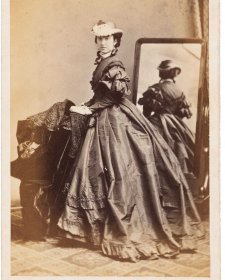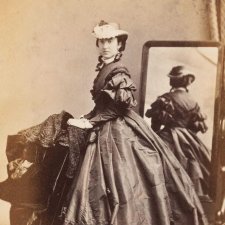James Macpherson Grant (1822–1885) was fourteen years old when his family emigrated to New South Wales from Scotland. In Sydney he was articled to a law firm in which he eventually became a partner, but in 1850 he left for California with a shipload of goods for sale. After returning to Australia he headed to the Bendigo diggings for a time before settling in Melbourne and returning to the law. Known for his radical views, in December 1854 Grant addressed a public meeting in Melbourne in support of the Eureka rebels, expressing his belief that they had ‘been goaded into rebellion by the stupid action of the Government of the day.’ He later successfully defended the miners, for no fee, against charges of sedition. In 1855 he entered Parliament as the member for Sandhurst (Bendigo) on the Legislative Council before being elected to the Legislative Assembly on the advent of responsible government the following year. Grant’s occasional hot-headedness and ferocity and his reputation as a hard drinker meant that his legal practice suffered, but his political fortunes were bolstered by his agitation on matters such as land ownership. As President of the Board of Lands and Works and Commissioner of Crown Lands and Survey from 1864 to 1870, Grant succeeded in passing a land act which enabled small-time selectors to take up 20-acre holdings at two shillings per acre. A second land bill allowed the selection of up to 320 acres conditional upon cultivating and improving the land, with the option of converting to freehold. Returning to the Legislative Assembly in 1871, Grant twice served as Minister for Justice and was Chief Secretary and Minister for Public Instruction between 1881 and 1883.
The Paterson brothers William and Archibald began working as photographers in Melbourne in the 1850s. In March and April 1858 they offered for sale ‘an excellent portable PHOTOGRAPH GLASS-HOUSE, with operating, waiting, and finishing rooms’, and by August of that year were notifying customers that they had relocated from Swanston Street to their ‘City Portrait Rooms’ at 141 Bourke Street east. During the 1860s their operations expanded to include studios in North Melbourne, Carlton, Fitzroy as well as Collins Street in the city and a second Bourke Street premises (No. 8). This was the address given for the firm in 1866 when a selection of their ‘Portraits, plain and coloured’ were included in the fine arts section of the Melbourne Intercolonial Exhibition.
Collection: National Portrait Gallery
Gift of John McPhee 2018
John McPhee (4 portraits)



On one level The Companion talks about the most famous and frontline Australians, but on another it tells us about ourselves.



Drawn from the NPG’s burgeoning collection of cartes de visite, Carte-o-mania! celebrates the wit, style and substance of the pocket-sized portraits that were taken and collected like crazy in post-goldrush Australia.



Visit us, learn with us, support us or work with us! Here’s a range of information about planning your visit, our history and more!